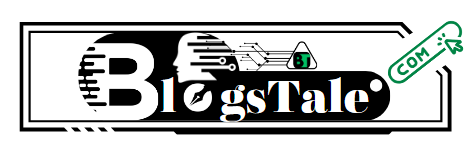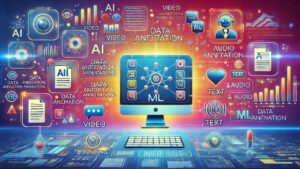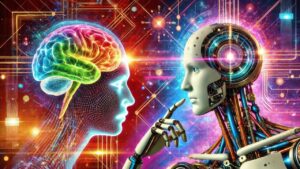A pivotal character is an open book, which is reworked by education every moment. Education is a process in which people obtain new knowledge and new skills, give old knowledge some structure and synthesize the various systems that constitute their individual personality. It is a collective entity of (1) acquiring cognitive tools to help one think better (2) learning valuable skills that other members of society will find useful as well as training so one can make their own living or co-produce society and further education when one s labor no longer suffices
Throughout history, education has with varying degrees been a watershed in human society. For example, the ancient Greeks held that physical education was necessary both for developing one’s mind and body. Today people think of education more clearly as being crucial to economic development, social mobility and self-fulfillment.
Key Takeaways
- Education is the process of acquiring knowledge, skills, values, and attitudes that enable individuals to understand and interact with the world around them.
- Throughout history, education has been a cornerstone of human society.
- Today, education is seen as a key driver of economic growth, social mobility, and personal fulfillment.
Education is a process of acquiring knowledge, skills, values, and attitudinal orientations that will enable an individual to understand and interact successfully with the world around him. It is at best during education that man makes up his mind about what he wants most in life.
Visible throughout history, education has been a corner-stone of human society.
Today, education is seen as the realization of economic development, social mobility and individual self-fulfillment. History of Education Ancient Civilization
History of Education
Since the ancient civilizations such as Egypt, Greece, or Rome, education was mainly limited to the upper class. In these societies, education was confined entirely to training those who would possibly become leaders of others.xxvii In other words, one had to be able to lead a nation or empire in battle before he ever became king. To train for that high purpose there would be a week of performance followed by a week without performances held by GPs and church leaders.
Ancient Civilization
The ancient Greeks believed that physical education was important. They were wrestlers and runners, but sport has now become part of modern life and there seems little point in discussing what ancient sports were called or how they were done.ibrii And they had entered their games in the Olympic festival with such strong feet: for it not just struck fear into their opponent’s hearts but got his sweat up higher upon his face tooxxviiI.
Medieval to Early Modern Period
During the medieval period, education centered mainly on the church: Education was taught by monks and focused primarily on religion. But after the early modern period in Europe, even education went beyond clerical bounds. It began to be nonreligious from its very inception. Universities first appeared in this era, and education was made available to broader segments of society than ever before.
The Modern Education System
The modern education system that we are familiar with today really started to take shape in the nineteenth century. With the passage of law re both learning and workers age, education itself became a right for all children. In education, the emphasis moved from classical culture and humanities toward work as so did astronomy. The new science which came to play an important role in society.
Today education continues to evolve and change in ways that reflect the needs of society. Technology has completely changed how we learn. Online education means one has access to more education whenever one chooses. Conservatives want the old ones brought back but under new forms; liberals are all in favor of gradual change and making it happen “naturally.” Of course, the fundamental goal of education today remains unchanged: We want to give individuals a comprehensive set of knowledge and skills so that they can live successful lives.
Education Systems of Other Nations
Comparative education:
Educational systems around the world differ widely in terms of their structure, content, and outcomes. While some countries have a highly centralized system of education that is very standardized, others are more decentralized and flexible. The education system in the United States, for example though, is highly diffuse, with different educational policies and performance standards in each state. In comparison, Finland has a highly centralized education system, complete with standardized tests at the national level and a national curriculum.
Education systems also differ when it comes to outcomes. In developed countries, education tends to be of higher quality than in under developing nations, says the World Population Review. For example, countries such as Canada, Japan, and Korea have some of the best education systems in the world, boasting large percentages of literacy and numeracy among their populations.International Education Policies
Nevertheless, although there are differences between these countries in terms of structure or curriculum , there are some common trends emerging in educational policies worldwide. One such trend is a focus on increasing the number of people who achieve an education for all stages and types, irrespective of their social or economic background. This has resulted in policies like compulsory and free primary and secondary schooling, as well as the opening up of vocational and technical education for all students in general.
Another trend is a focus on improving standards of education. This has resulted in such systems as standardized testing and assessment, new methods and technologies of teaching; such as personalized learning Florentine stated, which uses computers to provide pupil-tailored tutoring in accordance with individual student’s own requirements.
Alternative Education Models
Besides standard education systems, there are also alternative models of education which are becoming widespread throughout the world. For example, homeschooling allows parents to teach their children at home instead of sending them to a traditional school. Montessori education is another type, stressing hands-on learning and individual exploration rather than prescribed content or format of instruction.
Although these alternative models are not suitable for everyone, they offer students a way to receive the kind of schooling that suits their own unique needs and interests personally. As education systems from around the world continue to develop, we can expect further experimentation with alternative models from students and teachers alike.
Theories of Learning
Learning is an acquisition process, of which knowledge, skills, and attitudes are all parts. There are several common theories of learning in education that explain how students obtain knowledge and develop skills. Knowing these theories can motivate teachers to design after more effective teaching strategies best suited for the various needs of their student audiences.
Behaviorism:
As a learning approach, behaviorism stresses the effect of the environment on behavior. According to this view, learning is the result of associations made between a stimulus and response that are rewarded or punished. Behaviorists hold that learning is a passive process and that the learner’s mind is a blank slate which can be shaped through conditioning. Their techniques include positive and negative reinforcement, and punishment.
Cognitivism:
Cognitivism is a theory of learning that emphasizes the role of mental processes in learning. According to this theory, learning occurs when the learner consciously processes information and creates meaning from it. Cognitivists believe that learning is an active process involving attention, perception, memory and problem-solving. Cognitive techniques might include mind-mapping, brainstorming or problem-based learning.
Constructivism:
Constructivism is a theory of learning that emphasizes the role of the learner in constructing knowledge. According to this view, learning occurs when learners participate with their environment and meaning results. Constructivists maintain that learning is a social activity involving cooperation, negotiation and reflection. Their techniques might include dialogue-based teaching, problem-solving learning (SBT) and collaboration.
Humanistic Approaches:
The main humanistic approaches are learning theories, which lay emphasis on the role of personal growth in learners and Morphophonemics development.According to these theories, learning happens when the learner is motivated by their own interests and needs.Humanistic approaches maintain that learning is a self-regulated activity requiring continual reflection and evaluation in which learners must take responsibility for their own actions.Such a viewpoint emphasizes some distinct humanistic techniques for education, including experience-based learning, self-directed study and reflective learning studies.The strengths and weaknesses of particular learning theories differ throughout the world and amongst different school-age populations; teachers should thus select the most suitable theory for their students based on particular needs and preferences for learning.Technology in EducationWith the help of modern technology, education has already changed from “one size fits all” to an easily personalized process for individual studentsPS: On calling, what does “at any time” mean?E-Learning PlatformsE-learning platforms are now a main-channel for remote education to students. Together with them go a battery of services: video lectures; interactive quizzes; discussion forums. Thus students can pace their own learning.One of the most popular e-learning platforms is Coursera, which offers hundreds of courses from top universities around the world.Educational SoftwareEducational software has also broken new ground in transforming education, with their interactive formats engaging students and helping them remember more.Duolingo is an educational software program that employs gamification to help students learning new foreign languages.
Technology in Education

Education has been greatly affected by the internet. Without it, students could never have such easy access to millions upon millions of scholarly articles or books. Students can now make use of online libraries and databases that have collections of materials like those found in physical libraries, and so on.
What’s more is that students, using social media platforms such as Twitter and LinkedIn, have a better chance than ever before to get in touch with people working in their own field of study. They can even get help from these industry professionals about career planning which was quite impossible in previous times.
At last, thanks to technology, the entire education sector has been refreshed and turned new. Students can now learn anything anywhere at any time! E-learning platforms, educational software, and the internet have all contributed to this transformation.
Difficulties for Education:
Although education is an inalienable right of all individuals, there are many challenges affecting both students themselves and the educational system in general. Some of these significant challenges will be listed in the following sections.
Access and Equity:
Access to education remains a major challenge for many students, particularly those from poor families or marginal communities. The National Center for Education Statistics found from a survey that the proportion of children living in poverty is higher among Blacks, Hispanics (Latins) and American Indians/Alaska Natives than it is among Whites & Asians. This type of inequality leads to unequal educational opportunities. It has a long-term effect on students’ lives in education.
Moreover, when students have access to education there still remains questions of fairness. For example, students with disabilities are unable to access education of the same quality as their able-bodied peers. And students in non-English speaking households will find difficulties posed by language barriers here too.
Quality of teaching:
Another big challenge in education is the quality of teaching. Teaching quality can vary greatly from one school or district to another. In public, poor dropout and low graduation rates appear to confirm the effects of teacher quality on student achievement. According to an Education Week report, “Teach quality is the most important in-school factor affecting student achievement.”
To account for this challenge, schools need more teacher training and greater support. Also, schools should place greater emphasis on recruiting high-quality, experienced teachers, so that students get a better education.
Policy and reform:
Policy and reform are other big challenges facing education. Education policies often have a political influence on their making, leading to changes that may not be in students’ best interest. For example, changes in either the financing structure or content areas can significantly affect who gets how much education.
To meet this challenge, policy makers should adopt evidence-based policies that are founded on data by research. also, policymakers need to talk to teachers, students, and parents so that the policies can be tailored as much as possible to reflect individual conditions and take account for student needs
In conclusion, access and equity, quality of teaching, and policy and reform pose significant challenges which must be overcome if all children are to have a good education. By overcoming these challenges, we can build a system that is fair and efficient that serves all of its students equally with the skills they need for success in life.
FAQs

Q:What are the roles and responsibilities of a Government Department of Education?
A:The primary task of a Government Department of Education is to formulate, implement and administer educational policies and programs. This includes setting standards for curriculum, teacher qualifications, and student assessment.They are also responsible for ensuring that schools are safe, accessible, and provide an environment that is conducive to learning.
Q:With what resources can we help enrich the instructional experiences of teachers?
A:There are many resources available to help teachers enrich their instructional experiences. These can include educational technology tools, professional development opportunities for teachers and administrators, as well as access instructional materials such as textbooks and online content. Many educational organizations also provide help and support to teachers in the form of lesson plans, activities or strategies for teaching an array of content areas.
Q:How do public education agencies ensure that every student receives a quality education?
A:Public education agencies ensure that every student receives a quality education through setting high standards for students’ achievement, providing professional development for teachers, and implementing programs to help those students who are struggling in their studies.








